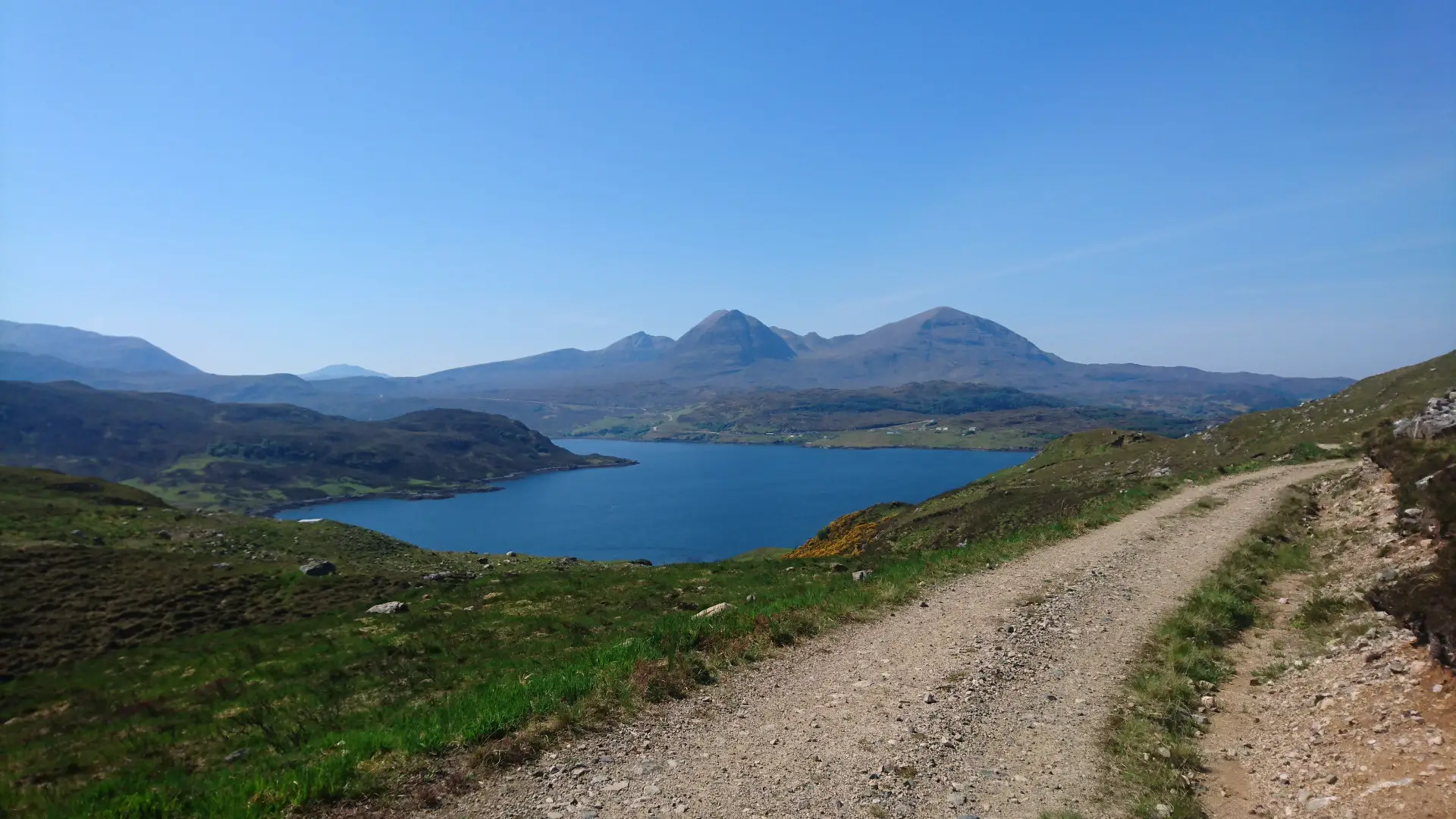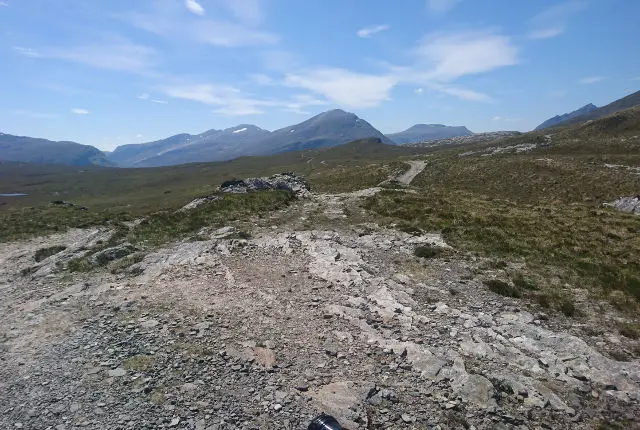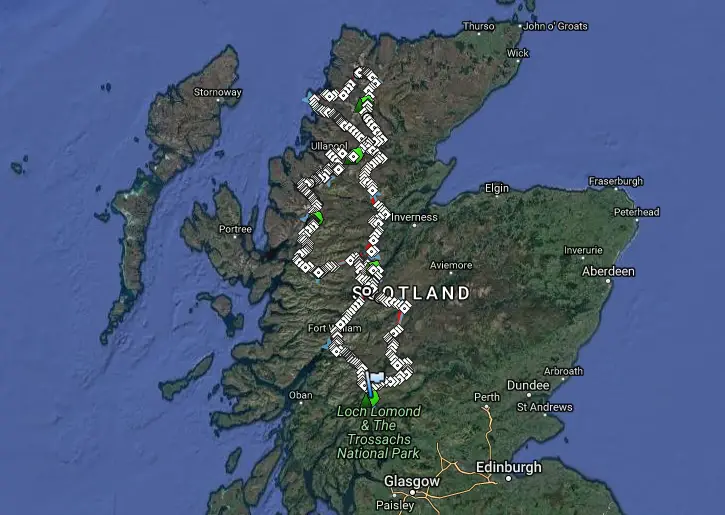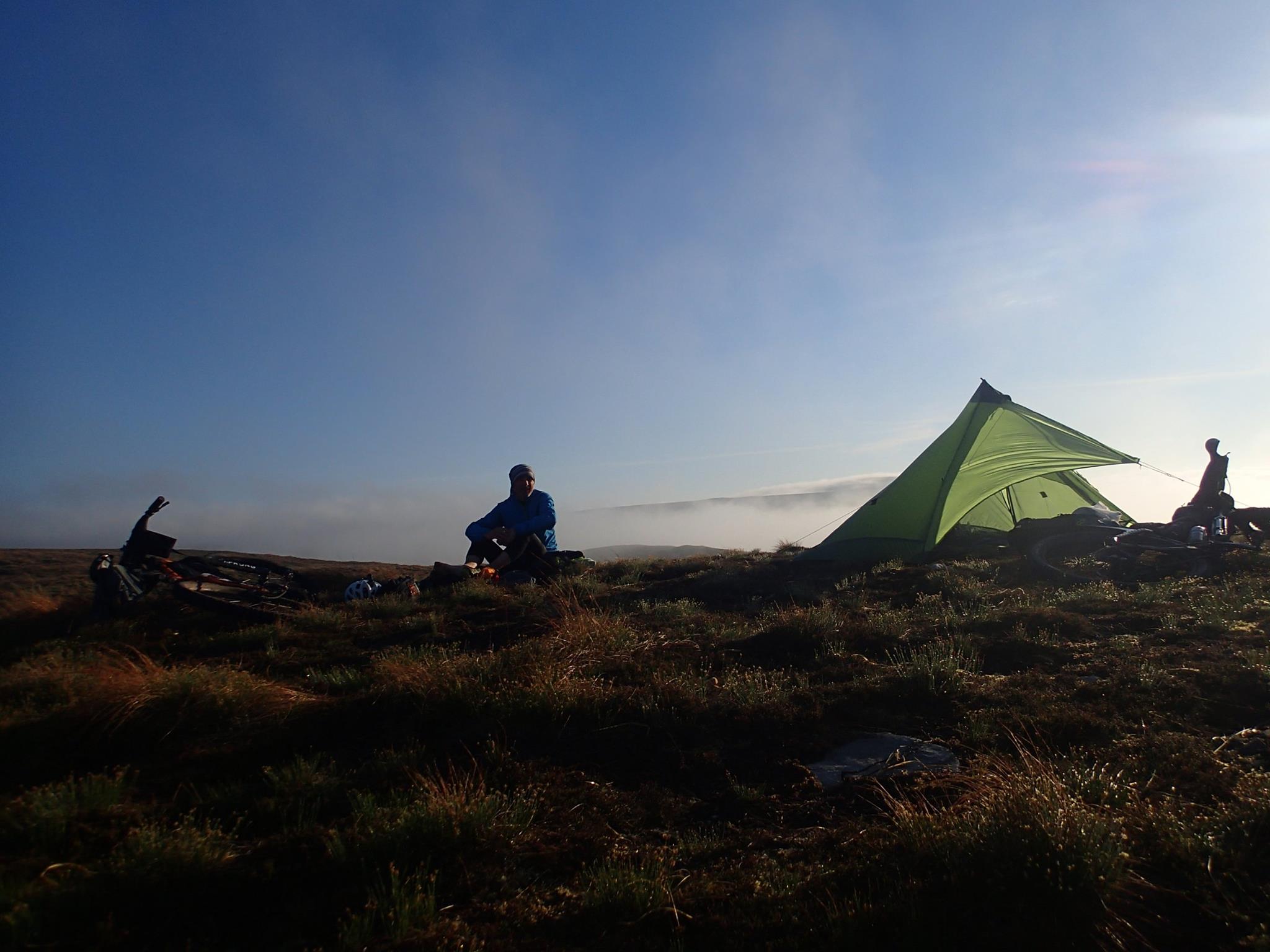Islander Sean Belson is a man who likes a challenge.
His most recent was to cycle on 560 miles of the mountainous rough paths around the Highlands of Scotland – on a bike with a single gear. If you’ve even ridden up a hill on a bike, you’ll appreciate quite how amazing this is. No chance to change down to a lower gear, he just had to dig-in and do the climb.
That’s not where Sean’s achievement stops being impressive.
560 mile event
Those taking part in the Highland Trail 550 are barred from having any outside help, so carry everything they need for the 560 mile event – food, water and shelter has to be carried by them. The only concession is that they can buy items from the less-than-plentiful shops – but they then have to carry these items themselves on their bike.
Not only did Sean do it on a single gear bike, but he did it in an amazingly fast time – so much so that he finished so early (coming fourteenth out of 70) there was no one there at the finish line!
Invite only
Clearly not everyone can complete such a gruelling task as this – and this is recognised by the organisers who have made it strictly invitational. You have to prove you’re good enough to qualify to even be invited take part. Sean was granted one of only 40 places that he qualified for.
We at OnTheWight were so utterly impressed with Sean’s undertaking that we posed some questions to him to try and understand more about it – with the added benefit that it might inspire others to realise that what a person can achieve is far beyond what most of us realise.
Questions and Answers
OnTheWight: What made you want to do it?
“I first heard about the event on a bike-packing forum, this is basically cycling and camping combined. There are social rides where it’s just a great way to travel and see the country and there are also the competitive events. I followed the riders in the 2016 Highland Trail 550, each rider has a GPS transmitter which sends their location back to a satellite every ten minutes and their location is shown real-time on the website. I thought ‘I’d like to have a go at that’ and so started a two year journey to get to the start.
“The event is invitational and you need to qualify. You send the organisers the details of other events you have done in the year before and this enables them to ensure only those able to survive make the start. They limit entries to 60 with ten reserved for overseas competitors and ten for women so just getting on the start list is an achievement, There were over 70 on the reserve list this year who didn’t make the cut.”
Click on image to see larger version

“The event passes through the most remote parts of the UK so self-sufficiency is essential. The event is run on the same rules as the other similar races and is self-supported. There is no back-up, no outside support or assistance and riders carry all they need to survive. The rules state no outside assistance, no pre-arranged support, no food drops and only services available to all can be used, so buying food from shops as you go along.
“If you’d like some more background the website gives some information.”
OTW: Have you had other adventures like this before? What/how many?
“I started training for the event in July 2016 to enable me to ride some qualifying events in 2017. I rode the Braunton 150 (150 miles and 24,000 feet of climbing in the west country) in Easter 2017 and finished in a time of 26 hours 18 minutes and came joint fourth overall.
“I also rode the BB200 (200km and 19,000 feet of climbing in mid Wales) on October 2017 and finished in a time of just under 21 hrs. The BB200 does not publish finishing positions as the aim is to complete the course in under 24 hours.
“As these events are short enough to ride without stopping at night I also submitted details of some multi-day trips I had done including a 270 mile round trip from home to Winchester along the South Downs Way and then back.”
Click on image to see larger version

OTW: Did you discover anything about yourself during the trip you didn’t know before?
“Although I’ve ridden for long periods before I discovered that it’s possible to push the body way beyond the point where you would think you’d have to stop. As long as you keep eating and drinking and keep the mind focused. In the race I tried to minimise my stopped time as the clock is running all the time.
“For the first four nights I only had abut four hours sleep. Despite this I managed to ride through the fifth night and was on the go for 29 hours to finish in a total time of 5 days and 54 minutes for the 553 miles with 59,000 feet of climbing.”
OTW: I saw you did it on a single speed (amazing btw!) – Was it freewheel or fixed wheel?
“I rode a fully rigid single-speed mountain bike with a steel frame and carbon-fibre forks. The bike does have a free-wheel so I didn’t have to pedal on the downhills. I rode the bike as this is the main bike I ride. The simplicity helps keep the weight down, my bike with kit, food and water weighed just over 40lb. The bike is also robust.
“There are no opportunities for getting spares so the bike needs to be reliable. I actually broke the front brake adaptor but managed to re-fix the brake to the fork using half a spare chainring bolt and the stem top-cap bolt.
“I had to ride 200 miles with this but I was lucky I could fix it as that distance with only a rear brake on that terrain would have slowed me down considerably.”
OTW: Can you outline a little about the end where you finished ahead of time? – (so much so you beat your partner to meeting you!)
“My wife, Jane, came with me to Scotland. As no support is allowed she headed off for a tour of the Highlands staying in luxury hotels whilst I was out riding. I had hoped to get back in six days which would mean finishing about 9am on the Friday so she arranged to be back in Tyndrum (the start/finish location) for the Friday.
“The temperatures in the Highlands were record highs for the period and in the mid to high 20s, this did take a toll, but also meant that sections of trail which are normally slow going had dried out and were more ride-able. I realised that with a big effort on the last day and riding through the night a sub five day finish might be possible. As it was I finished just over the five days and there was no-one at the finish line.”
“I saved the details on my GPS to show what time I’d finished and rolled down the hill to Tyndrum, stopping at the shop for a first breakfast of an ice cream, chocky bar and a can of Iron Bru. After eating this I continued the couple of hundred yards down the road to the Real Food Cafe where the other racers hang out. I was greeted and congratulated by those who had finished before me and then had a second breakfast of a full fry-up with multiple cups of tea and several pieces of cake to wash it down.
“Many events bill themselves as ‘The Toughest’ or ‘The Hardest’ but I can say that HT550 really is one of the toughest there is. Some of the other competitors I chatted to along the way have competed in similar events all over the world but they all said this was the hardest they’ve done. The combination of the distance, the terrain and the remoteness all add up.
“At one point due to the slow going on the tougher sections I didn’t make it to any towns for the opening times of the cafes/pubs so had no hot food for over 48 hours. Sleeping out night after night, with no showers or change of clothes could also affect your mood, but it’s just a matter of getting on with it.
“Despite the hardship I met and rode with some great people along the way and made some friends for life. Would I go back next year to try and beat my time? Straight afterwards it was a definite ‘No’, but as the days have passed I’m now at a ‘Maybe’. Ask me again in a few months and I’ll be planning my strategy ready for 2019.”
Thanks to Dan for the heads-up.








